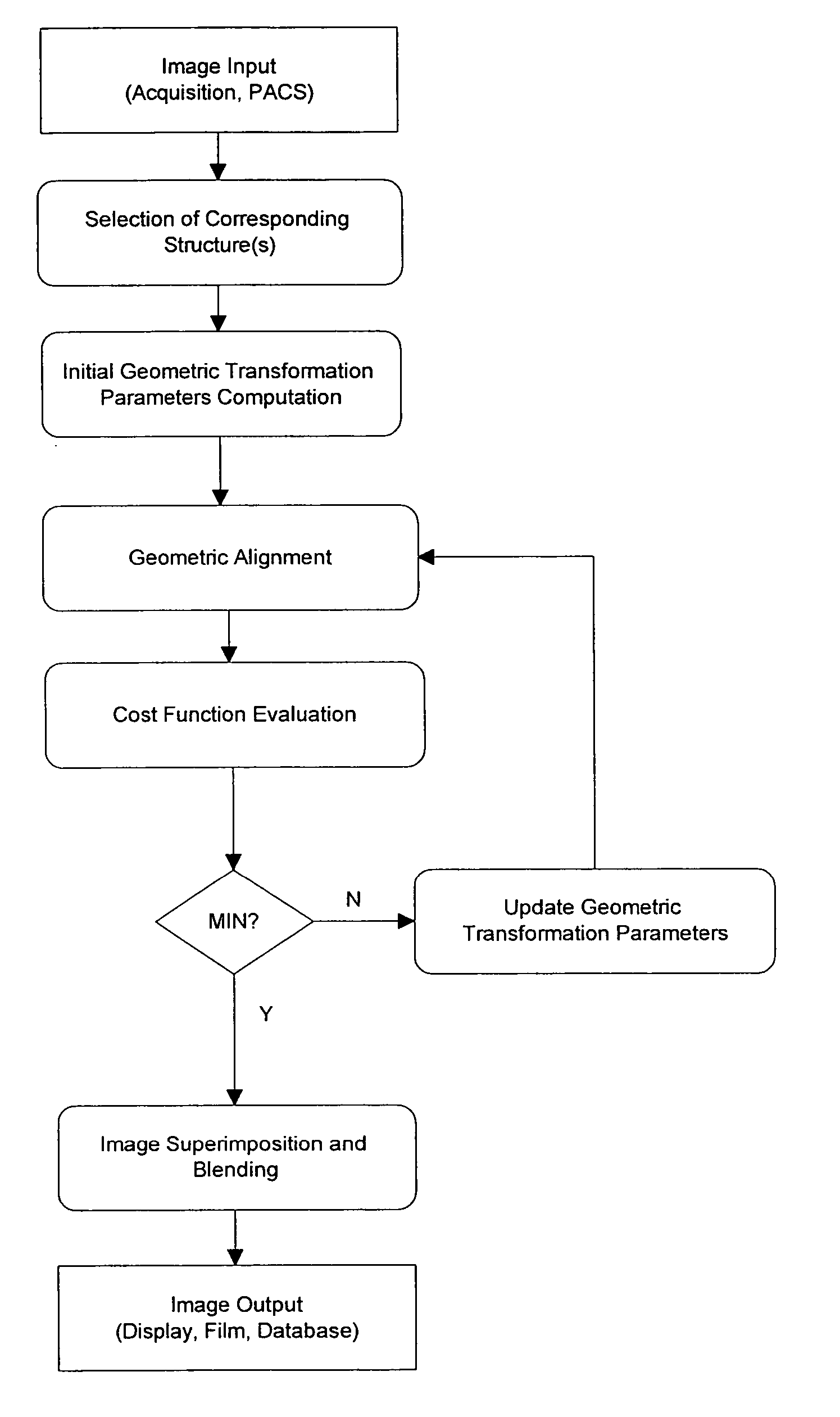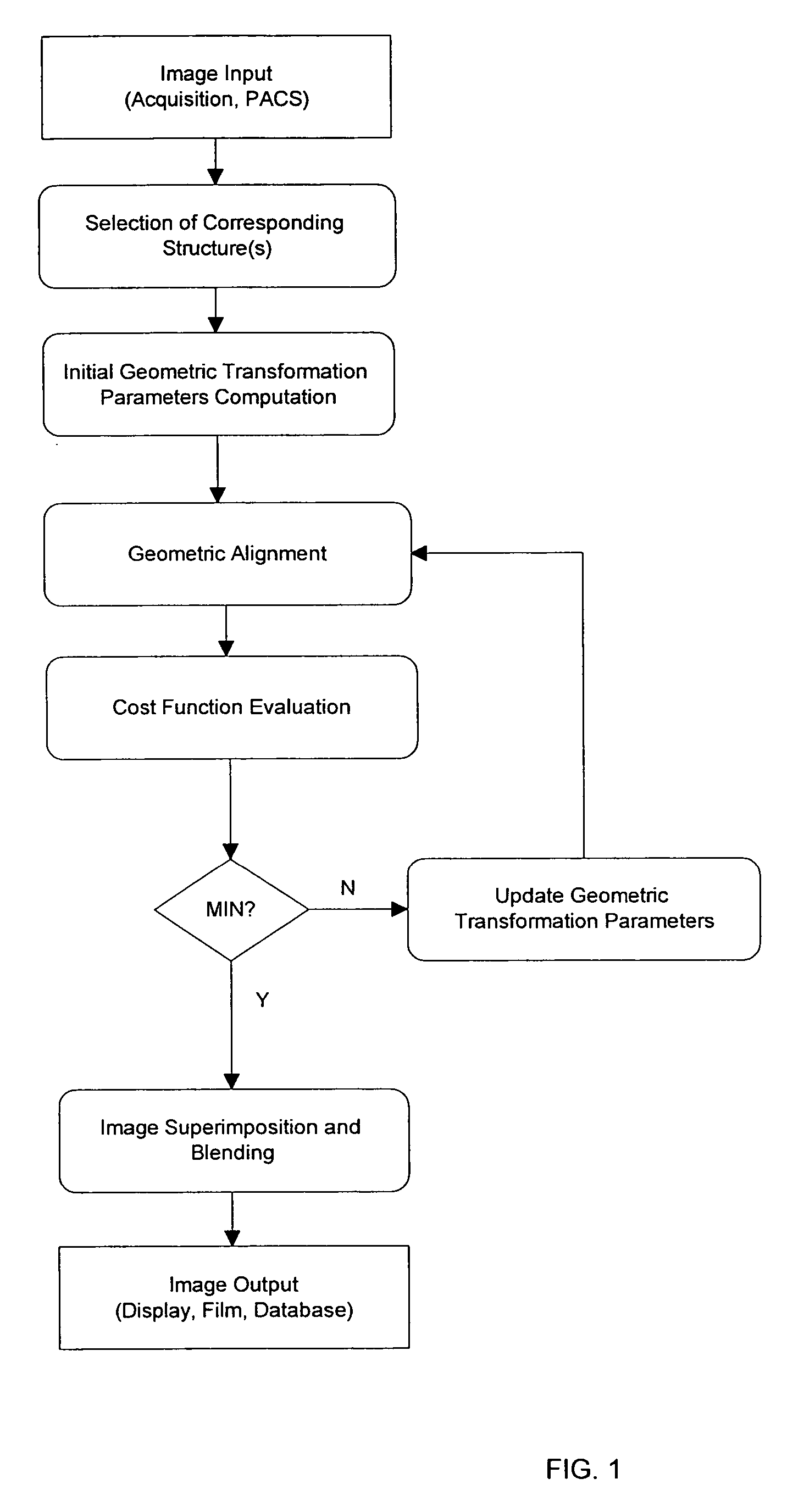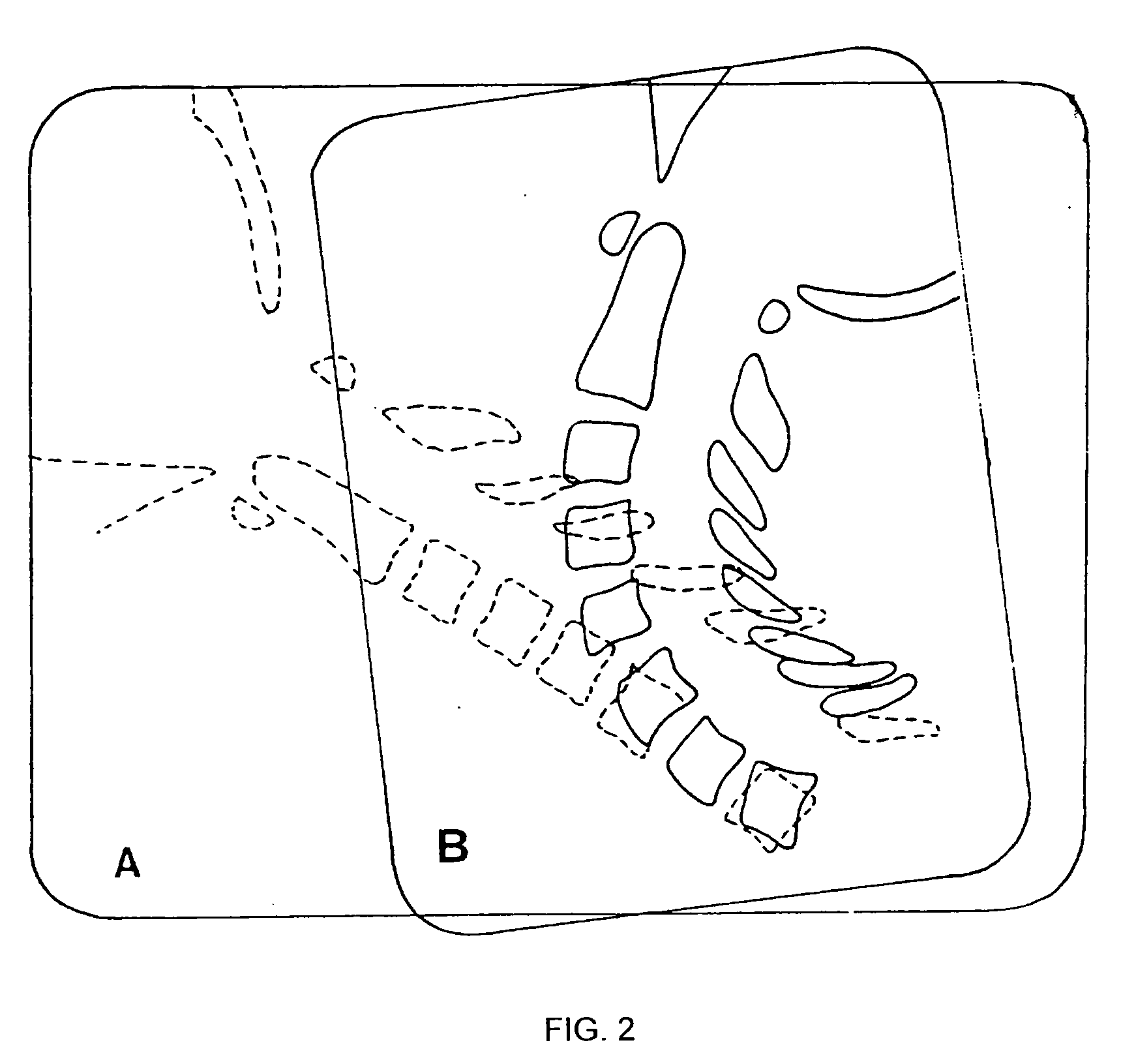Method of superimposing images
- Summary
- Abstract
- Description
- Claims
- Application Information
AI Technical Summary
Benefits of technology
Problems solved by technology
Method used
Image
Examples
Embodiment Construction
[0029] Image superimposition (also referred to as registration or alignment) of two images involves (1) obtaining a digital representation of the images that will be superimposed, (2) applying a geometric transform to one of the images (3) computing a similarity measure and (4) adjusting the parameters of the geometric transform according to a search strategy in order to optimize the similarity measure and re-iterate from step 2.
[0030] Each of these four key components of registration is discussed in the context of the present invention of superimposing (aligning) two radiographs. This step may precede a step of blending (also called fusing) the images.
Selection of the Type of Image Information
[0031] The methods of registration that will be outlined in the sequel can be divided into two main categories based on the type of image information that is used in the registration: intensity-based methods and feature-based methods. The result of registration is that the images look simi...
PUM
 Login to View More
Login to View More Abstract
Description
Claims
Application Information
 Login to View More
Login to View More - R&D
- Intellectual Property
- Life Sciences
- Materials
- Tech Scout
- Unparalleled Data Quality
- Higher Quality Content
- 60% Fewer Hallucinations
Browse by: Latest US Patents, China's latest patents, Technical Efficacy Thesaurus, Application Domain, Technology Topic, Popular Technical Reports.
© 2025 PatSnap. All rights reserved.Legal|Privacy policy|Modern Slavery Act Transparency Statement|Sitemap|About US| Contact US: help@patsnap.com



